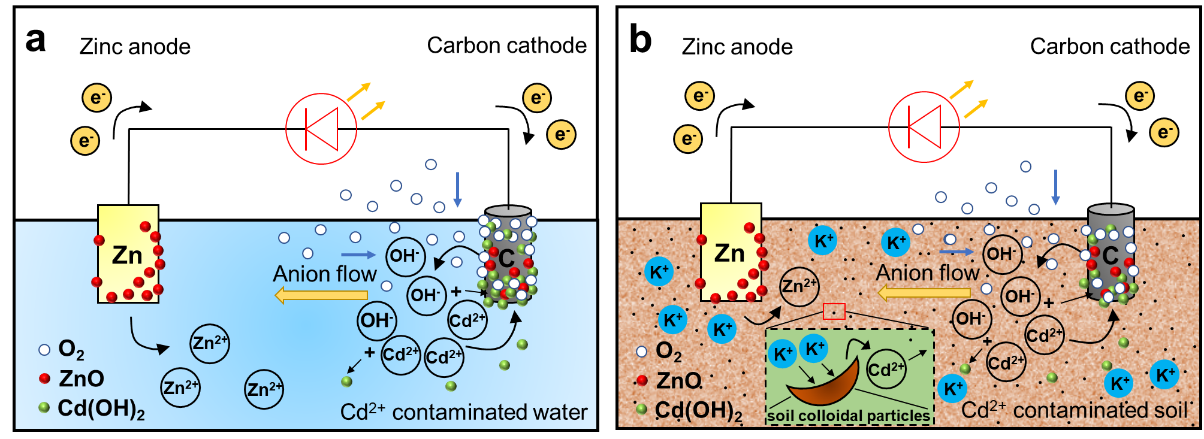
A research team led by Prof. WU Zhengyan and Prof. ZHANG Jia from the Hefei Institutes of Physical Science of the Chinese Academy of Sciences, in collaboration with Prof. CAI Dongqing from Donghua University, has developed a new primary battery system that that simultaneously removes cadmium ion (Cd2+) from contaminated media while generating electricity.
In a paper recently published in Fundamental Research, the researchers described how they used zinc as the anode, graphite as the cathode, and Cd2+-contaminated media (Cd2+-contaminated water or soil) as the electrolyte to develop this system.
Cd2+, with its high solubility and migration rate, is known to cause serious ecological and human health problems. Previous technologies for the remediation of Cd2+-contaminated water and soil have been limited by high energy consumption and operational complexity, highlighting the urgent need for new remediation technologies.
The new battery system achieved efficient solidification and removal of Cd2+ in water and soil by reducing dissolved oxygen through internal Galvanic reactions in the battery. A large amount of OH was generated and precipitated with Cd2+ driven by an electric field.
By connecting several primary battery systems in series, the researchers designed an output power supply, and LEDs were continuously lit during the Cd2+ removal process.
"The idea is to kill two birds with one stone," said CHEN Chaowen, first author of the study.
The researchers also checked the health of plants, zebrafish, and soil microorganisms after using the system and found no negative effects.
The technology has characteristics of low cost, green energy conservation, easy operation, and has broad application prospects.
This study was supported by the National Natural Science Foundation of China and the Plan of Anhui Major Provincial Science and Technology Project.

Mechanism of primary battery based on Cd2+-contaminated (a) water and (b) soil. (Image by CHEN Chaowen)

86-10-68597521 (day)
86-10-68597289 (night)

52 Sanlihe Rd., Xicheng District,
Beijing, China (100864)

